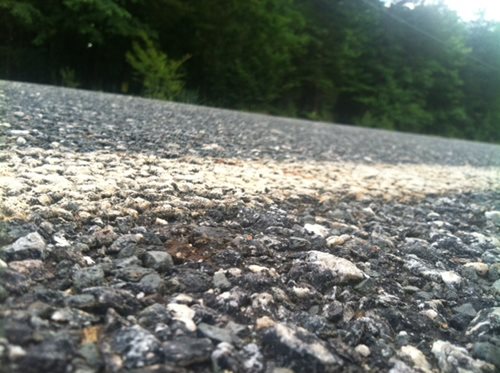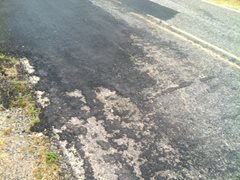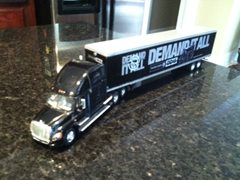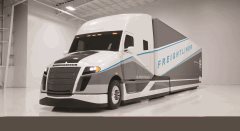 |
|
If you look really close, the road surface begins to take on the appearance of mountains . |
I decided to take a walk down the street from my home. I made my way further out onto some old country roads. What I saw was different types of road surface which included, gravel, course black top, smooth black top, patched black top and concrete.
 |
|
Patches make for mini mountain climbs and potholes are like a small canyon expedition. |
During my walk, I began thinking about my old racing days. I remember a friend of mine who looked at any energy that didn’t move you forward as wasted energy/movement. Some examples of this would be a motor cross cycle flying through the air. This looks really impressive; however they are often passed by the cyclist who gets his wheel back onto the ground and moving forward. A drag racing car which pulls a massive wheelie with its front end of the car pointed towards the heavens also looks very impressive. In this case, the energy used to lift the front of the car up is much better used to move the car forward. These are just a couple of examples as there are many.
As I continued on my walk, I took note to each dip and crevice in the road along my path. The small hills on the surface of the road seemed like they formed mini mountains. Some of the potholes reminded me of miniature canyons. We realize that we can’t have a perfect smooth road like glass or we could not stop our vehicles in the rain. There is a balance between smoothness and traction for obvious reasons.
 |
|
A smooth surface like granite would be efficient, however a vehicle could not stop in the rain. |
Let’s get back to wasted energy. Any time when there is a gap, patch, pothole or even rough service area, it hinders forward movement of a vehicle. Most of this energy is absorbed by the vehicles suspension. The up and down motion of our suspension is dampened by the shock absorbers and this energy is converted into heat. Anything that creates heat without moving a vehicle forward detracts from a vehicle’s fuel efficiency.
There have been a lot of great efforts created from the Department of Energy “Super Truck Projects.” This could even be greater if they were combined with a “Super Road Project.” Think of how much fuel could be saved if we traveled on smooth roadways with minimal grade changes. Also, if when we arrived in cities and were offered true through lanes or bypasses in which there was no interaction with local traffic. In my mind, this lane would start 15 to 20 miles before you entered the city and wouldn’t end for 15 to 20 miles after traveling outside of the city. Think how much efficiency this would add by not stopping or
 |
|
Smooth truck, smooth trailer and smooth driving equals maximum efficiency . |
interacting with local traffic.
I’m back from my walk and it’s time for me to get moving forward myself. Time to pack and hit the road.